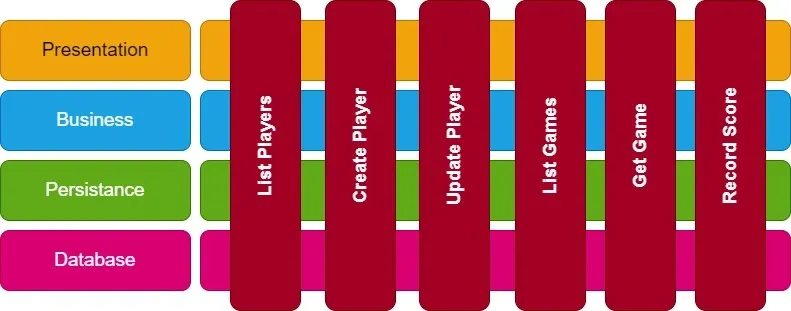Vertical Slice Architecture: A Personal Perspective on Building Better Software

As a software developer, I'm always on the lookout for new and innovative ways to approach software architecture. One architecture that has caught my attention recently is the Vertical Slice Architecture (VSA). In this blog post, I will share my personal experience and insights on VSA and how it has improved my development process.
VSA is a software architecture pattern that emphasizes the organization of code around the features of an application rather than its layers or technical components. With VSA, developers break down an application into vertical slices that encompass all the layers of the system, from the presentation layer to the data access layer. Each vertical slice contains all the code required to implement a specific feature or use case, making it a self-contained unit that can be easily maintained and tested.
One of the key benefits of VSA is its focus on business requirements. With VSA, developers work in cross-functional teams, collaborating with stakeholders and subject matter experts to define and implement features that meet the needs of the business. This approach encourages a more customer-centric development process that is focused on delivering value to end-users.
Another advantage of VSA is its scalability. By breaking down an application into smaller, self-contained vertical slices, it becomes easier to add new features or scale up existing ones. This can be particularly beneficial for larger applications that require frequent updates or changes.
In my personal experience, VSA has helped me to develop cleaner, more maintainable code. By organizing my code around business requirements and vertical slices, I've been able to avoid the pitfalls of traditional layered architectures, which can often result in tightly-coupled code and spaghetti-like dependencies. Instead, VSA encourages a more modular and decoupled approach to development, allowing me to make changes and updates with minimal impact on the rest of the application.
Of course, like any architecture pattern, VSA is not a silver bullet. It requires a significant investment of time and effort to implement properly, and it may not be suitable for all types of applications. However, in my opinion, VSA is a valuable tool in a developer's toolkit that can help to improve the quality, scalability, and maintainability of software systems.
I believe that Vertical Slice Architecture is a powerful software architecture pattern that can help developers build better software. By organizing code around business requirements and vertical slices, VSA promotes a more modular, maintainable, and customer-centric development process. While it may not be suitable for every application, I encourage developers to explore VSA and consider how it could benefit their own development efforts.